Friday, February 25, 2022 – IT STARTED AS A PLACE FOR LADIES TO RELAX AND ENDED WITH TOO MAY GOOD TIMES


FRIDAY, FEBRUARY 25, 2022
The 607th Edition
CENTRAL PARK
CASINO
FROM THE MUSEUM OF THE
CITY OF NEW YORK
Susannah Broyles
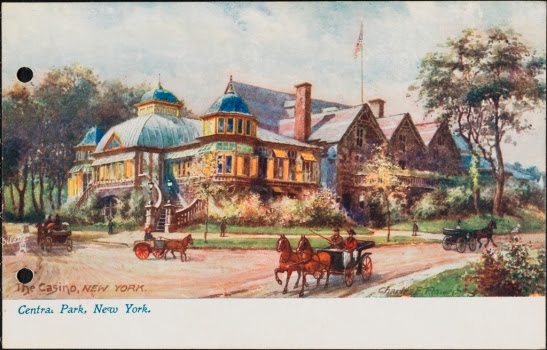
The Central Park Casino
It’s 1929 in an Art Deco ballroom. Dancers glide around, dimly reflected in the black glass ceiling while outside on the terrace, the sound of champagne corks popping intersperses with conversations, laughter, and jazz, all floating through the night air. Surrounded by Central Park, the Central Park Casino was the place for rich, fabulous, and socially and politically connected citizens of the late 1920s and early 1930s who wanted to party together and ignore the troublesome 18th Amendment. Yet by 1935, the party was over. How did a political rivalry end the revelry at one of the most exclusive Jazz Age nightclubs?
The Central Park Casino began in 1864 as the Ladies’ Refreshment Salon, a quaint Victorian two-room stone cottage designed by Calvert Vaux on East Drive and 72nd Street. Unaccompanied ladies could relax during their excursions around the park and enjoy refreshments at decent prices, free of any threat to their propriety.
Twenty years later, the salon had morphed into a far pricier destination, called The Casino, and was open to both sexes. The name was used to invoke the Italian translation of “little house” rather than denoting a gambling joint. Locals and tourists flocked to the restaurant, where one could get a sirloin steak for 75 cents (just under 20 dollars in today’s money) and choose from an extensive wine list. Because it was in the park and had the then rare attraction of outdoor seating, it was the place to see and be seen.
Charles F. Flower and Raphael Tuck & Sons. Central Park, New York. ca. 1905. Museum of the City of New York. X2011.34.4545.AGE:

Unknown. Casino Cafe in Central Park. ca. 1885. Museum of the City of New York. X2010.11.1206.
Yet after decades of feeding and refreshing wealthy and hungry park-goers, the Casino fell onto hard times and according to an article from the New Yorker from September 20, 1941 by the early 1920’s it was being managed in “a somewhat dumpy nite-club style.”
In 1926 New York City was swept up in the Jazz Age. Speakeasies, dancing, and just a general pursuit of good times engulfed the city. To go with this fun-loving era, New York City elected a new mayor, James “Gentleman Jimmy” or “Beau Jim” Walker, who personified this spirit. Walker was a successful songwriter with the 1905 hit “Will You Still Love Me in December as You do in May?” and was generally much more enthusiastic about the excesses of the Roaring Twenties than being the mayor of New York. This worked out well since Tammany Hall was quite content to manage the city while Walker functioned as its dashing figurehead. Walker reportedly never made it to City Hall before noon and when he did and wasn’t feeling up to the task, he had a private “hangover room,” complete with a bed and an exercise bike (the bike was reportedly never used). (New York Times)

Unknown. Mayor Jimmy Walker walking down a street. ca. 1925-1935. Museum of the City of New York. F2012.58.866.
This is not to say that Walker was a bad mayor. His constituents loved him because he vowed to keep subway ride prices at a nickel, allowed baseball games to be played on Sundays, and promised to improve the parks. Mobsters loved him too since he was such a fan of the nightlife that they ran. On top of that, Walker was a gifted speaker, always ready with a quip, wisecrack or some delightful repartee. He was New York City’s master of ceremonies.
Perhaps unsurprisingly, the next incarnation of the Central Park Casino started with a favor. Sidney Solomon, a noted hotelier, had introduced Walker to his personal tailor and that, to the always snazzily dressed mayor, was worth quite a bit. So when Solomon asked to take over the Casino to make it into an “outstanding restaurant instead of the shanty it is now,” Walker (through a series of somewhat sketchy maneuvers) made it happen. After a $500,000 renovation, the Casino added a tulip pavilion, orange terrace, a silver conservatory and, most importantly, a black-glass Art Deco ballroom. There were tables to seat 600 and a parking lot for 300 cars. Solomon said, very humbly, “it is not just a renovation. It’s something that has never before existed so perfectly in the world.” On the night of June 25, 1929, every seat was taken as the Casino opened to select guests, the so-called “fashionable and fastidious” to whom the restaurant now catered to. It was called “Walker’s Versailles,” where the bandleader would immediately start playing “Will You Still Love Me in December as You do in May?” as soon as Walker and his mistress, the actress Betty Compton, walked in the door.
For the next few months, parties regularly lasted until 3 A.M., with Tammany hotshots mingling with Ziegfeld Follies’ showgirls. To get around the pesky Prohibition laws, patrons would leave their Rolls-Royces stocked with bootleg champagne parked outside. The maître d kept an eye on the drinks at the wealthiest tables and when they ran low, he would signal their chauffeur, standing near the doorway, to restock the alcohol from the stash in the car. It was the most exclusive playground for the most exclusive set.
In the fall of 1929, Walker easily defeated Fiorello La Guardia for a second term as mayor. While the Casino was still dazzling its well-heeled guests, some people saw it as the epitome of all that was wrong in New York. After the
October 1929 Stock Market Crash the critics roared louder. Why was it fair that the rich could gorge themselves at an expensive restaurant in the midst of a public park while the poor could barely feed their families? The loudest critic? Robert Moses, Parks Commissioner.

Unknown. Robert Moses in front of a map of New York City. ca. 1925-1940. Museum of the City of New York. F2012.58.960
To be fair, Moses did have a pretty solid point. When he and three friends visited to the Casino, their bill was a staggering $27 (around $475 today). Moses contended that the Casino’s prices were far more expensive than the Plaza Hotel and thus the Casino was inappropriate in a public park. But like all good stories, there was another layer to Moses’s hatred of Walker’s Versailles; Moses’s hatred of Walker himself. This mostly one-sided rivalry began when Walker insulted former Governor Al Smith, who had mentored both men. Moses wanted all physical traces of Walker’s legacy erased, but Walker was doing a fine job of that himself. Walker’s free-wheeling ways had finally caught up with him. Before Walker could be removed from office by Governor Franklin D. Roosevelt on corruption charges, he resigned and sailed to Paris with Betty Compton.
But that wasn’t enough for Moses. In an act of sheer vindictiveness, Moses refused to let Solomon make any changes like lowering the prices to make the Casino accessible to a wider range of patrons. Instead, Moses began to make plans to raze the building for a children’s playground. Despite protests from those who saw the historic value of the building, the Appellate Court decided that Moses had the right to demolish the building. On May 6, 1936, just 24 hours after Moses received court permission to tear down the Casino, wrecking crews were at the site.

Wurts Bros. (New York, N.Y.). [Destruction of the Central Park Casino.] 1936. Museum of the City of New York, X2010.7.1.16818.
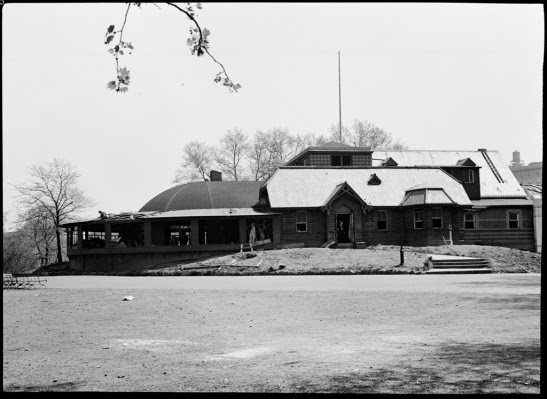
Wurts Bros. (New York, N.Y.). Destruction of the Central Park Casino. 1936. Museum of the City of New York. X2010.7.1.16820.
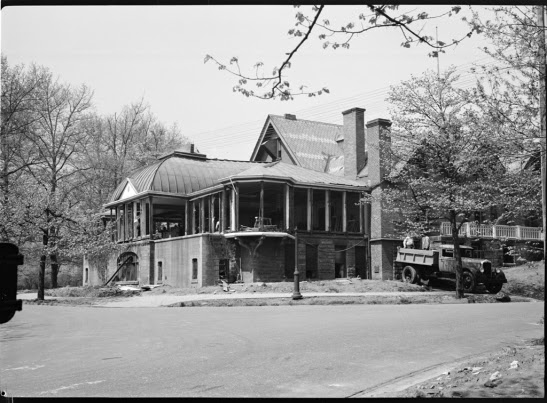
Wurts Bros. (New York, N.Y.). Destruction of the Central Park Casino. 1936. Museum of the City of New York. X2010.7.1.16817.
In 1937, the Rumsey Playground was built on the same spot as the Casino, but it was never a big success. In the 1980’s the site was razed again and converted into Rumsey Playfield where SummerStage events are now held. So next time you’re at a performance at SummerStage, close your eyes and imagine yourself among the politicos and showgirls, sipping champagne and dancing to “Will You Still Love Me in December as You do in May?” in the ballroom at the lost Central Park Casino.
For a collection of New York Times articles about the Casino and the Rumsey Playfield, download this PDF.
FRIDAY PHOTO OF THE DAY
SEND ANSWER TO ROOSEVELTISLANDHISTORY@GMAIL.COM
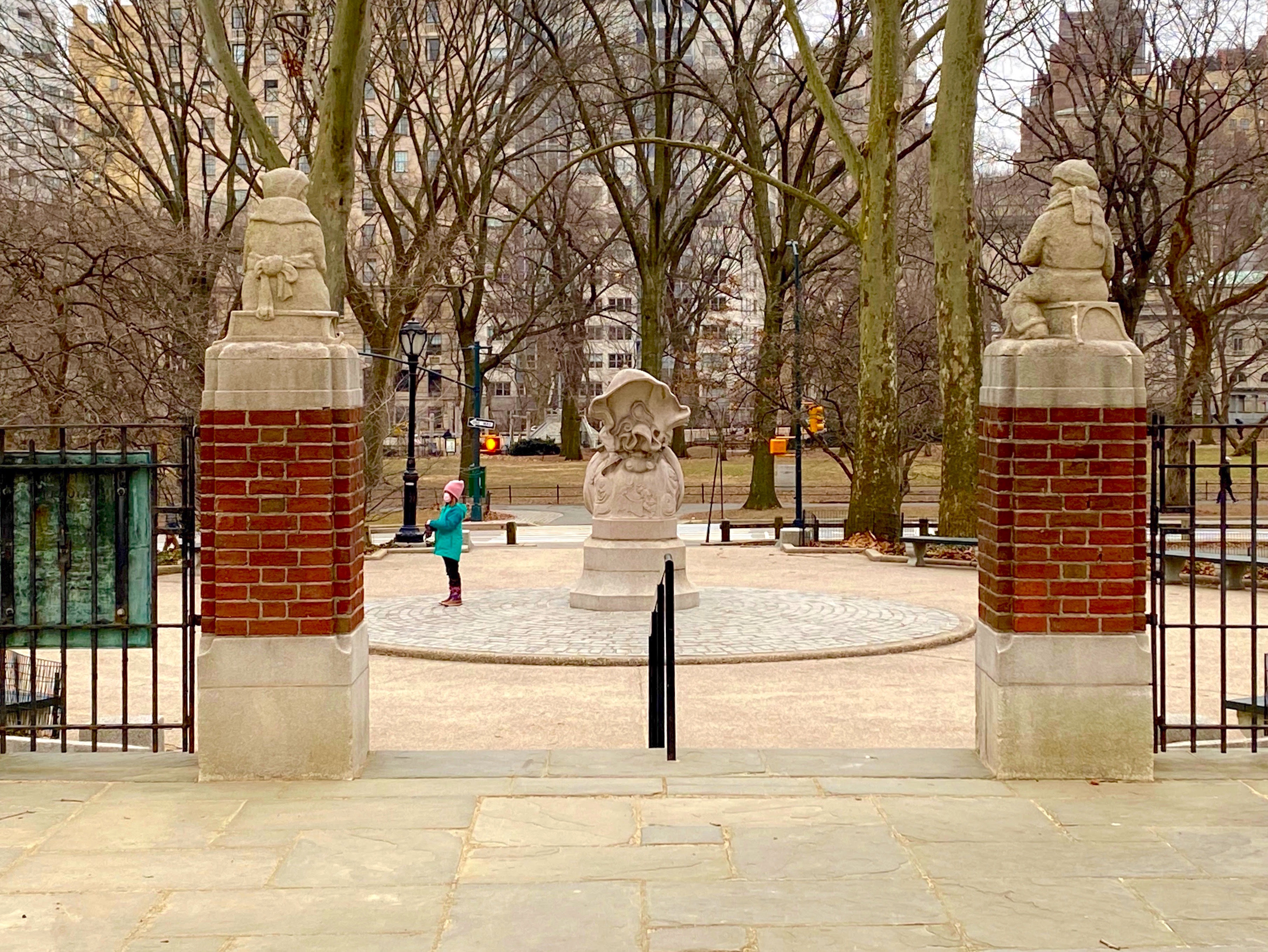
THURSDAY PHOTO OF THE DAY
THE FAMED SWAN BOATS IN BOSTON PUBLIC GARDENS
NINA LUBLIN, GLORIA HERMAN, CLARA BELLA, GUY LUDWIG, ARON EISENPREISS, M. FRANK, LAURA HUSSEY AND JINNY EWALD ALL GOT IT RIGHT
from JAY JACOBSON:
Some years ago, Swan Boats were popular on the Avon River in Stratford, Ontario. Pat and I have been annual attendees at the Stratford Shakespeare Festival since 1980s. We haven’t seen the Swan Boats in recent years (although the cadre of real swans who have mastered the art of flotilla swimming to visitors armed with stale breads from the local B&Bs as the swans and cygnets provide lessons in naval tactics). The island in the background today has some outdoor tables and chairs as the swans make sitting on the ground for lunch is not always a wise choice.
Second guess? Boston common swan boats
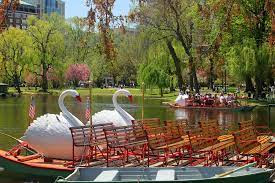
All image are copyrighted (c) Roosevelt Island
Historical Society unless otherwise indicated:
MUSEUM OF THE CITY OF NEW YORK
FUNDING PROVIDED BY ROOSEVELT ISLAND OPERATING CORPORATION PUBLIC PURPOSE GRANTS CITY COUNCIL REPRESENTATIVE BEN KALLOS DISCRETIONARY FUNDING THRU DYCD


Copyright © 2022 Roosevelt Island Historical Society, All rights reserved.Our mailing address is:
rooseveltislandhistory@gmail.com

Leave a comment